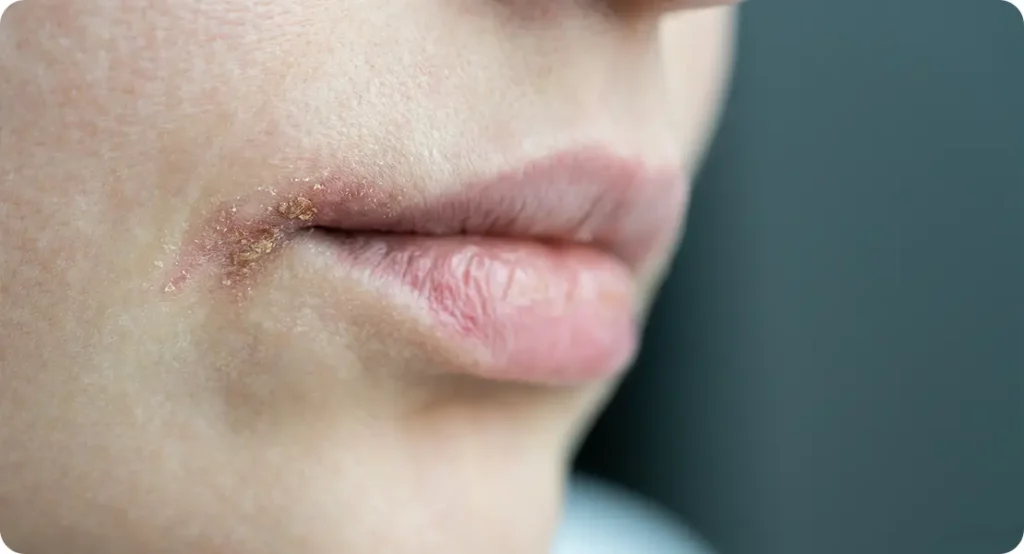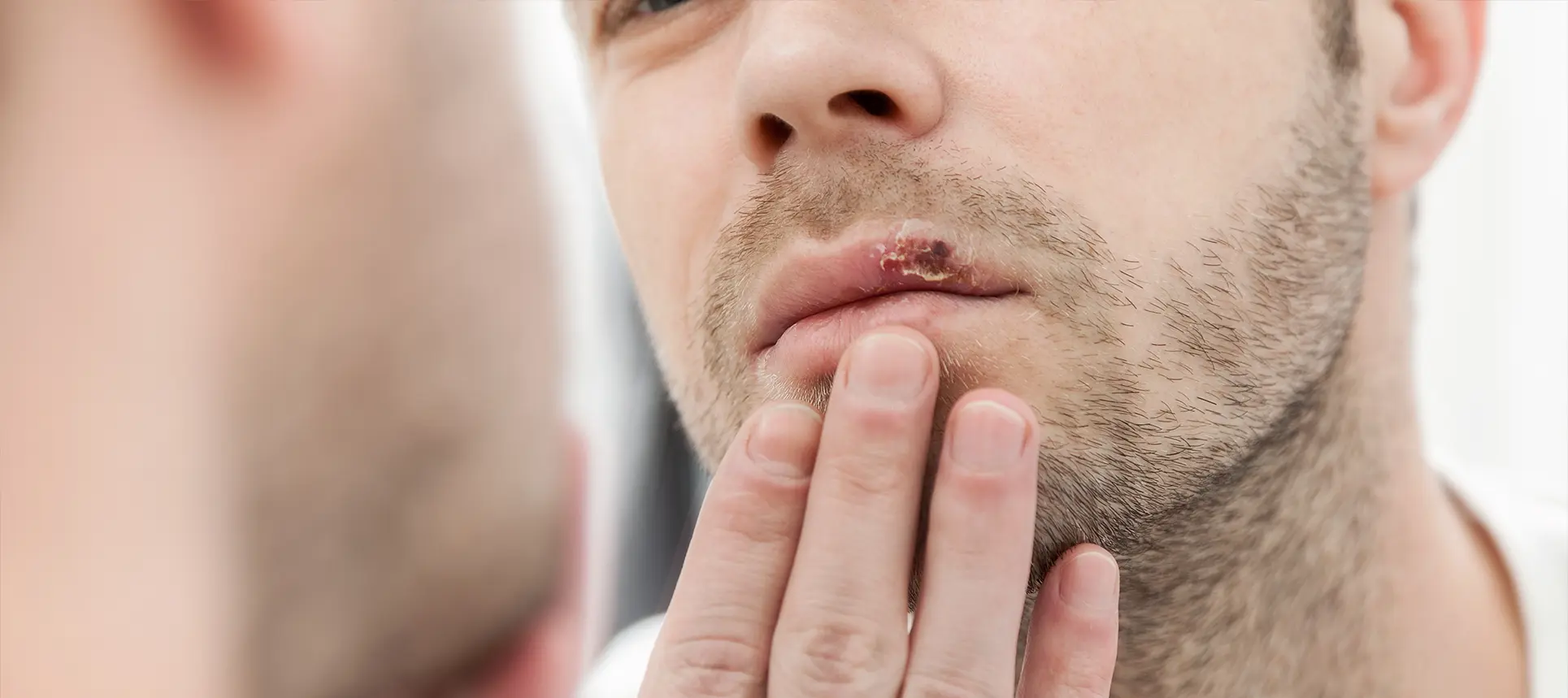1. What is an oral dermatologist?
An oral dermatologist is a medical specialist who focuses on diagnosing and treating skin conditions that affect the mouth, lips, and surrounding areas. While most people associate dermatologists with skin on the body and face, oral dermatologists deal specifically with the mucous membranes inside the mouth, which can develop their own unique set of conditions. These can include ulcers, rashes, pigmentation changes, and more.
They’re not to be confused with dentists or oral surgeons. Oral dermatologists aren’t there to clean your teeth or perform root canals. Instead, their expertise lies in identifying and managing medical issues of the oral mucosa that might indicate a dermatological disease or even a systemic condition. Think of them as a bridge between dermatology and oral medicine.
Patients are often referred to oral dermatologists when a GP, dentist, or even a regular dermatologist notices something unusual in the mouth that needs a deeper investigation. This can include persistent sores, burning sensations, white patches, or unexplained swelling. Because oral conditions can be tricky to diagnose, an oral dermatologist’s training is incredibly specialised.
In the UK, oral dermatology is considered a niche area of expertise, sometimes falling under the umbrella of oral medicine or dermatology. While there may not be thousands of oral dermatologists across the country, those who practise in this field offer a crucial service, especially when oral symptoms are the first clue to more complex health issues.
2. When should I see an oral dermatologist?
You should consider seeing an oral dermatologist if you’re dealing with persistent or unexplained symptoms in your mouth that don’t seem to be going away. For instance, recurring mouth ulcers, white or red patches, ongoing burning sensations, or sores that don’t heal within two weeks could warrant a specialist assessment. If your dentist or GP isn’t sure what’s causing the issue, an oral dermatologist might be your best next step.
Many oral conditions can mimic one another, and some can even be mistaken for minor irritations when they’re signs of more serious problems. An oral dermatologist has the tools and experience to distinguish between something harmless and something potentially concerning. That level of accuracy can save you time, discomfort, and in some cases, ensure that a serious diagnosis isn’t missed.

Even issues like chronic dry mouth, gum peeling, or unexplained swelling of the lips or cheeks can be linked to dermatological concerns. And while a dentist might manage the mechanical aspects of oral health, they may not always have the background in dermatology needed to treat these underlying skin-related causes.
If you’ve been trying over-the-counter treatments or if your GP has prescribed something and it hasn’t worked, that’s another signal. Oral dermatologists often deal with cases that are resistant to standard treatments, which means they’re used to finding answers where others couldn’t.
3. What conditions does an oral dermatologist treat?
Oral dermatologists treat a wide range of conditions that affect the soft tissues of the mouth and lips. Common examples include lichen planus, leukoplakia, pemphigus vulgaris, and mucous membrane pemphigoid. These sound technical—and they are—but they often appear as ulcers, white or red patches, or blistering in the mouth. Some can be quite painful or may increase the risk of complications if left untreated.
They also handle viral infections such as herpes simplex, fungal infections like oral thrush, and various allergic reactions that can affect the mouth. Sometimes, a condition on the skin like lupus or psoriasis may present symptoms inside the mouth as well. In these cases, an oral dermatologist plays a crucial role in ensuring that what’s happening internally is understood alongside any external skin symptoms.
Burning mouth syndrome is another condition commonly treated by oral dermatologists. It can be frustrating for patients because there’s often no visible cause, and standard tests might come back clear. Oral dermatologists are trained to dig deeper, looking at possible triggers such as hormonal changes, nerve dysfunction, or immune responses that aren’t obvious on the surface.
They also deal with pigmented lesions in the mouth, which may be benign or could indicate more serious issues, such as melanoma. An accurate diagnosis here is vital, as early intervention can make all the difference. In short, oral dermatologists are highly skilled in treating both common and rare conditions in a very sensitive part of the body.
4. How is an oral dermatologist different from a dentist?
At first glance, an oral dermatologist and a dentist might seem to overlap since both deal with the mouth. But in reality, their areas of expertise are quite distinct. A dentist is focused on teeth, gums, and jaw health—so they’re the ones you see for fillings, extractions, and cleanings. Their training revolves around dental structures and the mechanical side of oral care.
In contrast, an oral dermatologist deals with the mucous membranes and skin inside the mouth. This includes the cheeks, tongue, inner lips, and roof of the mouth. Their training includes in-depth knowledge of dermatology and often immunology, allowing them to diagnose and treat complex skin conditions affecting these areas.
You might see a dentist first for an issue like a sore in your mouth. But if it doesn’t heal or doesn’t seem like a straightforward dental problem, they’ll usually refer you to a specialist—sometimes an oral medicine specialist or directly to an oral dermatologist. That referral is key to getting the right diagnosis and treatment plan.
So while dentists and oral dermatologists both work in the mouth, their roles are very different. Think of it this way: a dentist handles the structure, while an oral dermatologist focuses on the surface and skin-based diseases. They work hand in hand, but each has a unique part to play in your oral health journey.
5. Do I need a referral to see an oral dermatologist?
In most cases, yes—you’ll need a referral to see an oral dermatologist, especially within the NHS. Your first port of call will usually be your GP or your dentist. If they notice something unusual in your mouth that doesn’t fit within their area of expertise, they’ll write a referral letter for you. This helps streamline the process and ensures the oral dermatologist has the background they need on your symptoms.

If you’re going through the private route, some clinics may accept self-referrals, although it’s still common practice to ask for some form of background or referral letter. This is mainly to help the specialist understand what’s already been tried or ruled out. It also avoids repeating tests you may have already had done elsewhere.
The referral system exists to make sure you’re being sent to the right person for the right reason. It might seem like an extra step, but it actually speeds things up in the long run because it gives the specialist a head start in your case. A good referral will contain not only your medical history but also any relevant blood test results, biopsies, or photos.
If you’re unsure whether you need a referral or not, just call the clinic you’re thinking of visiting. Most will be happy to guide you on the process, especially if you’re going private. Either way, don’t let the idea of needing a referral put you off—it’s a standard part of specialist care in the UK.
6. Are oral dermatologists available on the NHS?
Yes, oral dermatologists can be accessed through the NHS, but availability may vary depending on where you live. In larger cities or near teaching hospitals, you’re more likely to find specialists who deal specifically with oral dermatology or oral medicine. These services are usually based within departments of dermatology, oral medicine, or sometimes even ENT.
Waiting times on the NHS can be quite long, especially if the issue isn’t considered urgent. If your symptoms are causing significant pain or affecting your ability to eat, drink, or speak, make sure you explain this clearly when seeking your initial GP or dentist referral. The more specific you are, the better your chances of getting prioritised.
One thing to keep in mind is that the NHS may group oral dermatology cases under general dermatology or oral medicine. So, while the person you see might not have “oral dermatologist” on their nameplate, they’ll usually have the relevant expertise to assess and treat your issue properly.
If you’re looking for quicker access or more flexibility with appointment times, you might want to consider going private. But rest assured, if you’re on an NHS pathway, you will still be receiving a high standard of care—it just may require a bit more patience.
7. Can an oral dermatologist help with mouth ulcers?
Absolutely—they’re one of the key professionals for investigating persistent or recurring mouth ulcers. Most people get the odd ulcer now and then, but if you’re constantly dealing with them or if they last longer than a couple of weeks, an oral dermatologist is the right person to dig deeper. They’ll help you figure out whether your ulcers are part of a bigger picture.
Mouth ulcers can be triggered by a range of causes—from stress and vitamin deficiencies to autoimmune conditions and skin diseases like lichen planus. An oral dermatologist has the knowledge and diagnostic tools to rule out these possibilities or confirm them. That might involve blood tests, swabs, or even a small biopsy.
They’ll also look at your medical history, any medications you’re taking, and lifestyle factors that could be contributing. Sometimes it’s a case of trial and error to find the right treatment, but having a specialist on board speeds things up considerably. They can also prescribe more advanced topical or systemic treatments that a GP might not have access to.
So if ulcers are making your life miserable, you don’t have to just put up with them. Seeing an oral dermatologist could be the turning point in understanding the cause and finally getting some relief. You’d be surprised how much better things can get once you’re on the right treatment path.
8. What does a typical appointment involve?
A typical appointment with an oral dermatologist usually begins with a detailed discussion about your symptoms. They’ll ask when the issue started, how long it’s lasted, whether it comes and goes, and whether anything seems to make it better or worse. Don’t be surprised if they also ask about your general health, medications, stress levels, and even your diet—these can all offer important clues.
Next comes the examination. They’ll take a close look at the inside of your mouth using a light and possibly a small mirror or tongue depressor. If needed, they might gently stretch parts of your mouth to get a better view. Some areas might feel tender during the exam, but it’s generally not painful. If you have lesions, rashes, or unusual patches, they may take a photo for your records.
Sometimes, tests are needed. This could involve a swab to check for infection, a blood test to rule out underlying issues, or even a biopsy—a tiny tissue sample taken under local anaesthetic. These steps help the oral dermatologist form a full picture of what’s going on and rule out more serious conditions.
After the examination and any tests, they’ll explain their findings and suggest a treatment plan. This might include prescription medication, lifestyle changes, or further referrals if something more complex is suspected. You’ll usually leave with a clear idea of what to expect next and how your case will be managed going forward.
9. Can oral conditions be linked to other skin problems?
Yes, and this is actually one of the key reasons oral dermatologists exist. Many skin conditions can have manifestations inside the mouth. For instance, conditions like lichen planus, pemphigus, and lupus can all cause lesions or ulcers in the oral cavity. In some cases, these symptoms may even appear in the mouth before anywhere else on the body.
This overlap means that someone who presents with a seemingly minor mouth issue may actually be dealing with a more widespread dermatological or autoimmune condition. That’s why oral dermatologists look beyond just the mouth—they consider your whole health picture. They’re trained to spot patterns that link oral symptoms with skin, systemic, or immune-related diseases.

It also works the other way around. A person with psoriasis or eczema might notice flares in the mouth or lips under certain triggers, such as stress or certain foods. Even conditions like rosacea or allergic contact dermatitis can sometimes extend into the oral area in subtle ways. Oral dermatologists know how to distinguish these from primary oral disorders.
So if you’re already under the care of a dermatologist for a skin condition and notice anything new in your mouth, it’s worth mentioning. You may need to see someone who specialises in both areas. That extra layer of expertise can make all the difference in your treatment outcomes.
10. Can oral dermatologists detect cancer?
Yes, they can play a crucial role in the early detection of oral cancers. While oral dermatologists don’t typically provide the full cancer treatment themselves, they are trained to recognise suspicious changes in the mouth that could be early signs of malignancy. These can include non-healing ulcers, red or white patches (known as erythroplakia or leukoplakia), or unusual growths.
Early detection is key when it comes to oral cancer. Many of the warning signs are subtle, and it’s easy for patients—or even non-specialist doctors—to mistake them for something less serious. Oral dermatologists are trained to spot those red flags and take prompt action, which may include referring you to an oral surgeon or oncologist for biopsy and further investigation.
It’s also worth noting that some patients may develop pre-cancerous changes, which don’t cause symptoms but can be picked up during a routine exam. Oral dermatologists use their expertise to monitor these areas carefully, often with regular check-ups and photographic comparisons, ensuring any progression is caught early.
So yes, oral dermatologists are not just about treating discomfort—they’re also about protecting your long-term health. If you’ve noticed something in your mouth that looks or feels different, it’s better to be safe and get it looked at. A quick consultation could lead to life-saving early intervention.
11. Are treatments by oral dermatologists painful?
Most treatments provided by oral dermatologists are not particularly painful, especially with modern techniques and anaesthesia. If a biopsy is needed, it’s typically done with local anaesthetic, which numbs the area completely. You might feel a small pinch when the injection goes in, but after that, the procedure is generally painless and quick.
Topical treatments, such as steroid gels or anti-fungal creams, are commonly prescribed and are easy to apply. These are usually not painful to use, although there might be some initial stinging if the area is already quite raw or inflamed. Most patients find this settles down quickly once treatment begins to work.
For more complex conditions, oral dermatologists might prescribe systemic medication, like tablets. These could include corticosteroids, immunosuppressants, or antifungals, depending on the diagnosis. Side effects are always a consideration, but your specialist will weigh the pros and cons with you and monitor your response carefully.
In short, discomfort during treatment is minimal in most cases, and managing pain or irritation is always part of the plan. If anything does become painful or isn’t agreeing with you, your dermatologist will adjust your treatment accordingly. You’re not expected to “grin and bear it”—comfort is part of effective care.
12. How long does it take to see results?
It really depends on the condition being treated and how your body responds to the treatment. For some people, results start showing in just a few days—especially with something like a mild fungal infection or localised ulcer. These conditions often respond well to topical medications and can clear up quickly once the right treatment is in place.
Chronic or autoimmune conditions like lichen planus or pemphigus may take longer to respond. You might need to be on medication for several weeks before seeing a noticeable improvement. These conditions often require long-term management rather than a quick fix, and flare-ups can sometimes occur even with treatment.
Oral dermatologists are aware of how frustrating slow progress can be, so they typically set clear expectations during your appointment. They may also tweak your treatment plan based on how your symptoms evolve. Monitoring is a big part of this—you might be asked to come back for regular reviews to ensure things are on track.
Ultimately, patience and consistency are key. Following your dermatologist’s instructions to the letter, including how and when to use your treatments, makes a big difference. Don’t hesitate to get in touch if you feel things aren’t working—your specialist is there to help fine-tune your care.
13. Is oral dermatology covered by private insurance?
In many cases, yes—oral dermatology is often covered under private medical insurance, particularly when the condition is considered medically necessary. However, coverage can vary depending on your specific provider and policy. It’s always a good idea to check directly with your insurer to find out whether consultations, tests, and treatments are included.
Most insurers will require a referral from a GP or dentist before they approve a consultation with a specialist. Some plans may also limit the number of visits or require prior authorisation for more costly procedures like biopsies or advanced imaging. Make sure you ask for clarity on what’s needed to avoid delays or unexpected bills.

One key thing to note is that cosmetic concerns—like discolouration with no medical cause—are unlikely to be covered. But if your symptoms are causing discomfort, affecting your quality of life, or could indicate a serious health issue, insurers are generally willing to approve cover.
If in doubt, contact your insurance provider with as much detail as possible. A pre-treatment estimate from your oral dermatologist’s clinic can also help speed up approval. And remember, even if some treatments aren’t covered, the consultation alone can offer valuable guidance and reassurance.
14. Can children see oral dermatologists too?
Yes, children can definitely be seen by oral dermatologists, especially if they’re dealing with persistent or unusual issues in the mouth. Some oral dermatologists have additional training in paediatric care, but even those who don’t specifically specialise in children are usually comfortable seeing young patients for common concerns.
Children may develop oral problems like ulcers, fungal infections, or rashes due to immune responses, allergies, or infections. Sometimes they’re linked to childhood illnesses or reactions to medications. Because kids can’t always describe their symptoms clearly, it’s important to get a specialist involved early if something seems off.
Parents often worry about the impact of oral problems on eating, drinking, and speech. An oral dermatologist will assess not just the condition but also how it’s affecting your child’s overall wellbeing. Treatment is usually adapted to suit children, with milder medications, alternative formats like mouthwashes or gels, and extra care taken to minimise distress.
If your child has a skin condition like eczema or psoriasis and begins to show signs of oral involvement, that’s also a good reason to seek input. Early intervention can help prevent long-term complications, and paediatric oral dermatologists understand how to treat young mouths gently and effectively.
15. Where can I find a qualified oral dermatologist in the UK?
Finding an oral dermatologist in the UK can take a bit of digging, but there are reliable places to start. If you’re going through the NHS, your GP or dentist will typically refer you to an oral medicine clinic or dermatology department at a larger hospital. Teaching hospitals, especially those with dental schools, are more likely to have specialists in this area.
For private care, you can look up clinics online that specialise in oral medicine or dermatology. Websites like gmc-uk.org allow you to verify that a doctor is properly registered and licensed to practise in the UK. If a clinic claims to offer oral dermatology, check the practitioner’s qualifications and whether they have experience in this specific niche.
It’s also worth looking for reviews or patient testimonials, as these can give you a feel for the kind of care you can expect. Some consultants may even have published work or research in the field, which is a good sign of their level of expertise.
If you’re unsure where to start, ask your GP or dentist—they’ll usually know who to refer you to locally. And don’t be afraid to ask questions when booking an appointment—finding the right person can make all the difference in getting your symptoms under control.
Final Thoughts
Oral dermatologists are an incredibly valuable—though often overlooked—resource in healthcare. When mouth symptoms persist and the cause isn’t clear, they’re the experts who can dig deeper and find answers. Whether it’s ulcers that won’t heal, suspicious patches, or burning discomfort with no obvious cause, they have the specialist knowledge needed to get to the bottom of it.
The mouth is one of the most complex and sensitive parts of the body, and it often reflects what’s happening elsewhere in your system. That’s why it’s so important to take persistent oral symptoms seriously. Oral dermatologists work at the intersection of skin health, immune function, and general medicine, which makes them uniquely positioned to spot wider health concerns.
Don’t wait until things become unbearable. If you’re worried about anything in your mouth—especially if it’s been lingering—it’s worth speaking to your GP or dentist and asking for a referral. Getting the right diagnosis early can save you a lot of discomfort and anxiety.
Ultimately, oral dermatology is about more than just the mouth. It’s about treating the whole person, and making sure small issues don’t snowball into larger ones. Whether through the NHS or privately, help is out there—and it’s often more accessible than you think.
